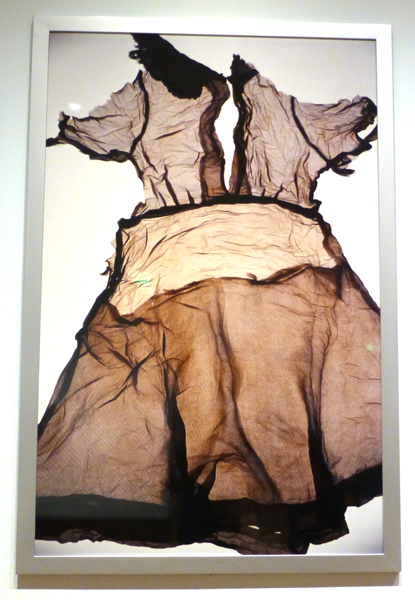Many artists have made the pilgrimage to Hiroshima and produced art works from a profound need to atone and understand how one of the greatest crimes of the second world war could have happened. To honor the dead, to pay testament to the terrible loss, to advocate for the abolition of nuclear arms, to ask how the United States could have carried out such an attack and what was the thinking behind this horrible action; all of these and many more thoughts have gone through the minds of artists since the direct aftermath of the bombings of Hiroshima and Nagasakai. It has become an international destination for artists who care deeply about peace and reconciliation.
But there are many ways to approach this terrible subject. In my case, as an artist I tried to understand it from the point of view of the Western mind, how it could rationalize the invention of this kind of weapon and then use it not once but twice on a culture it had already demonized as the “other.’ I was commissioned in 1995 by Harada Kampo, a Japanese National Living Treasure (now deceased), who was on the outskirts of Hiroshima on August 6, 1945 but survived. A master of five major styles of calligraphy he went on to re-establish calligraphy throughout Japan in the schools and sought to bring Japanese culture back after its near destruction. With me, he was aware of my non-violent philosophy and my art, and wanted me to make work that would interpret the Western mind, if possible. My mixed media photo based efforts are now housed in the Phoenix Museum of Art. And they are shown here alongside Ms. Miyako’s as a stark contrast of approach, that of my ‘Western’ American masculine contrasting with her ‘Eastern’, Japanese Feminine.
So, an entirely different approach, including that of many Japanese arist’s is that of photographer Ishiuchi Miyako, whose Hiroshima work is now on exhibit at the Getty Museum. In a quote from Stella Kramer’s written piece of 2013,
“There are many different ways to tell a story. Sometimes people start at the beginning and go for the chronological or linear way of story telling. Others come at it from an unexpected direction, elevating the smallest detail into the most powerful statement. This is what photographer Ishiuchi Miyako does to bring the nightmare of Hiroshima into the present. By photographing objects left after the bomb, and donated by family to the Peace Memorial Museum, Miyako has brought the past into the present.”
Yet Art in America in 2008 viewed her work as “Shot on light boxes, the tattered articles read as forensic specimens.”
As Ishiuchi Miyako said herself, “I can’t photograph the past, only the present. So it’s up to the viewers to bring their own memories to the images. Things left behind are eloquent. They speak to me and I hear them. Things are created for people to use, and things exist for humans. Once their user vanishes, the things should vanish, too. But these personal effects have outlived the persons who used them. The question is: Why?”
Many artists working on the same subject is a form of cultural exchange. Hiroshima represents one of the two issues, according to the history George Kennan that must be resolved in our lifetimes if our civilization is to hope to survive (the other being the degradation of the planet’s environment.) While my work takes a more head on, socio/political approach with some poetic license, Miyako would not approach the topic until 2007 feeling she had nothing new to say. When she did, she choose to photograph artifacts, some of which had been shot before, but she did them in color on light boxes or outdoors in sunlight. I interviewed her and asked her about whether her work is an advocacy art or apolitical. Her response was neutral, saying that the work ‘just is’ and that is her only responsibility. I found this kind of a dodge far too easy and many artists take it when they want to maintain neutrality is their platform but you can’t do this with the subject of Hiroshima that is intrinsically political, so I pressed on.
So why do it, I asked? What are you adding to the overall conversation? Isn’t your work, by making these artifacts from a horrible tragedy look so beautiful merely fetish-sizing them, and then they are being framed and sold in galleries? Indeed, you call this one photo your ‘Commes de Garcon’ shot because it is so gorgeous? At that Miyako-san relented a bit and admitted that yes, we are in a greater time of nuclear proliferation and the potential for danger is very high and she is of course affiliated with those who object to nuclear weapons and war.
Her work is very beautiful and I think it actually a sly strategy to bring the viewer into a closer experience with her art. They get hooked on the pleasure of looking at beautiful photographs and then find themselves understanding what it is they really are looking at, and then being responsible for having a conversation with themselves about nuclear issues. You can’t look at Miyako’s images, say what pretty images, and then turn away unless you are being completely dishonest. Once she gets you, you have to deal with it. Pretty clever of her ,and a pretty good artist.
